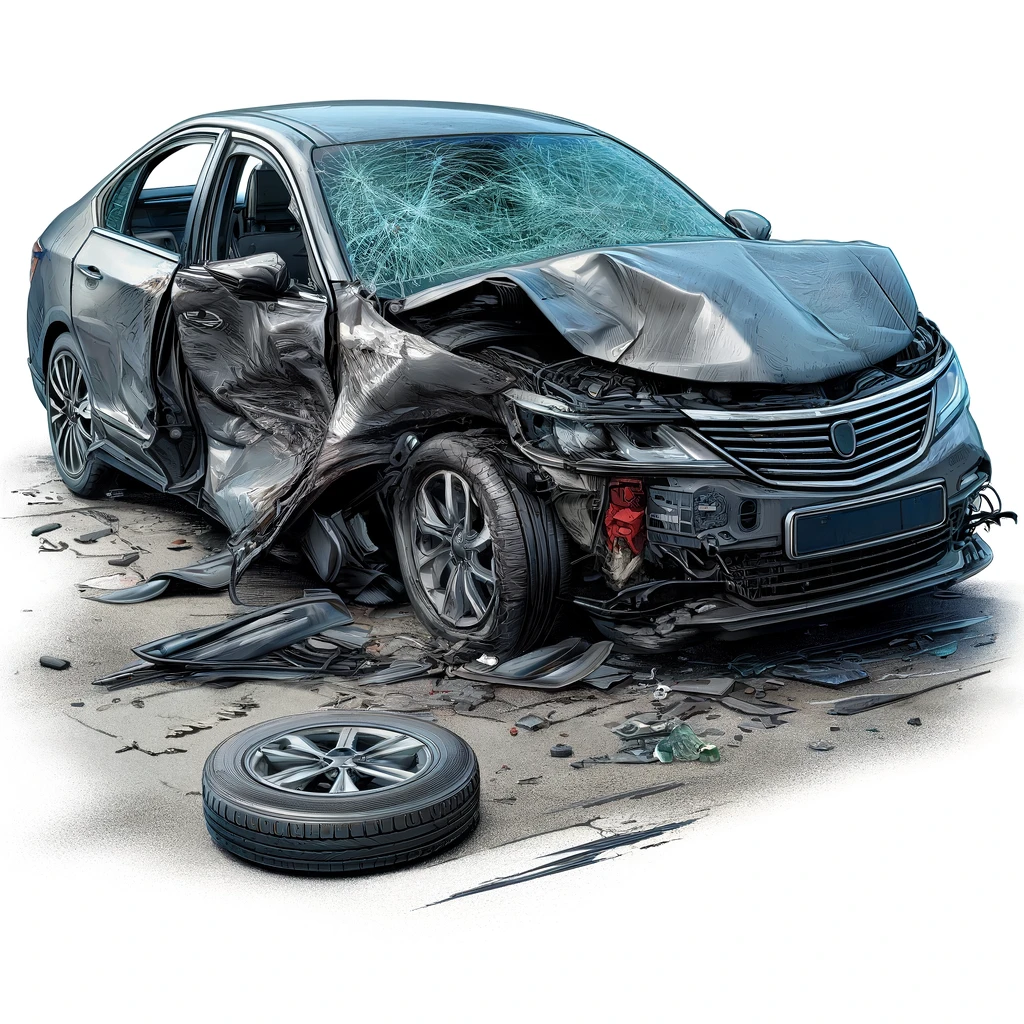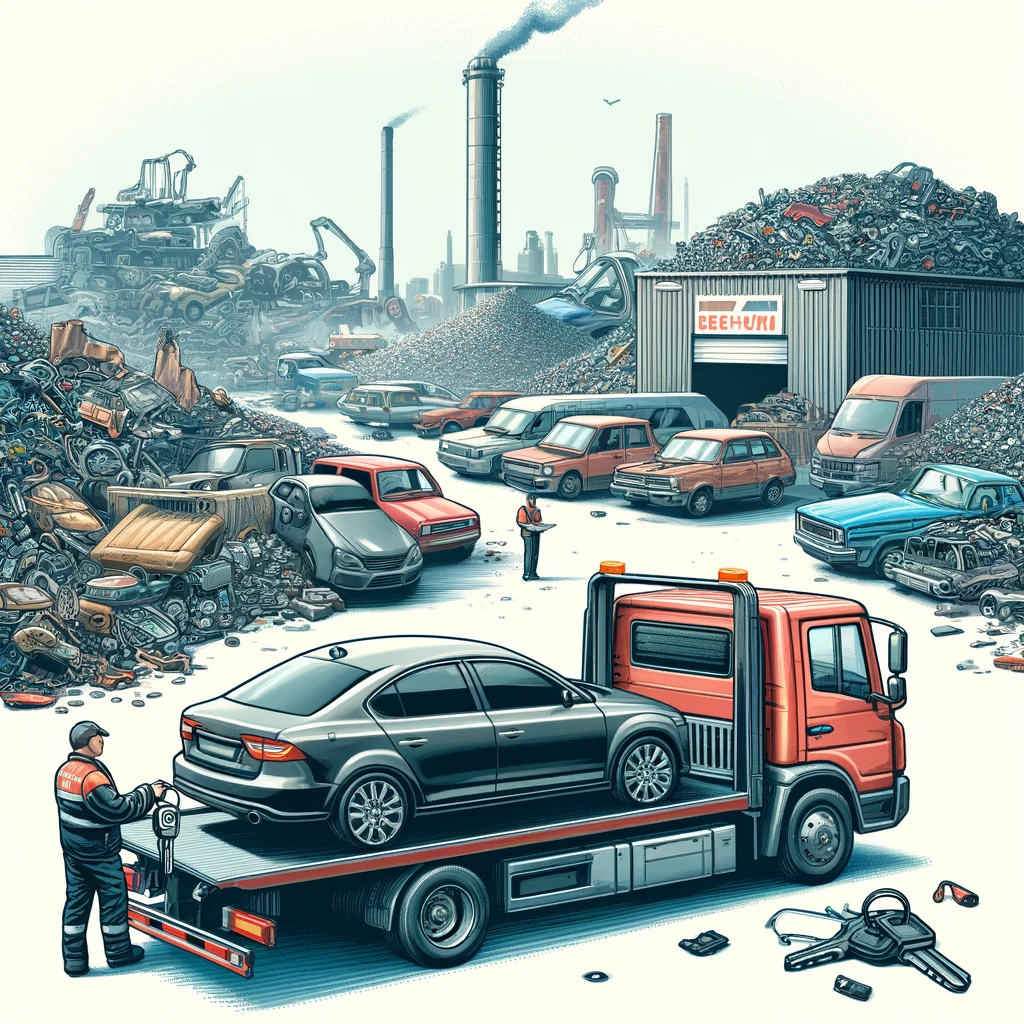
Selling the Wrecked Car
In the unfortunate event of being involved in a car accident, one of the critical choices that often arises is determining whether to sell the wrecked vehicle. While this decision can initially appear overwhelming, it is possible to derive some benefits from the situation by following a strategic approach. Selling a car that has been significantly damaged or is deemed uneconomical to repair can be a challenging process, but with the right guidance, it can be navigated effectively to ensure a smooth transaction.
When considering selling a wrecked car, the first step is to assess the extent of the damage and the overall condition of the vehicle. This evaluation will help in determining whether the cost of repairs outweighs the potential value that can be obtained from selling it. Once you have a clear understanding of the car’s condition, it is essential to explore different avenues for selling it. This may include reaching out to salvage yards, scrap metal dealers, or private buyers who specialize in purchasing damaged vehicles.
In addition to identifying potential buyers, it is crucial to gather all relevant documentation related to the car, such as the title, maintenance records, and any insurance information. Having these documents readily available can streamline the selling process and provide potential buyers with the necessary information they may require. Furthermore, it is advisable to set a realistic asking price for the car based on its current condition and market value to attract genuine buyers.
Moreover, marketing plays a vital role in selling a wrecked car successfully. Utilizing online platforms, social media, and local classifieds can help reach a broader audience of potential buyers who are specifically looking for damaged vehicles. By creating detailed listings with accurate descriptions and high-quality photos, you can generate more interest and increase the chances of selling the car promptly.
Finally, once you have found a suitable buyer for your wrecked car, it is important to handle the transaction carefully and ensure that all legal formalities are completed correctly. Transfer the title of the car to the new owner and make sure to provide any necessary disclosures about the vehicle’s condition. By following these steps and being proactive throughout the selling process, you can turn a challenging situation into a positive outcome by selling your wrecked car efficiently and effectively.
Understanding Your Selling Options

The first step is to evaluate the condition of your car and determine the most feasible selling option. If the damage is extensive, selling the car to a junkyard or a salvage yard might be your best bet. These facilities often buy wrecked cars for parts or to repair and resell them. Another option is to sell the car “as is” to private buyers who may be looking for a project car or need spare parts.
When it comes to understanding your selling options for your car, the initial step involves carefully assessing the condition of your vehicle to ascertain the most viable selling solution. If your car has suffered extensive damage, one practical option is to consider selling it to a junkyard or salvage yard. These specialized facilities are known to purchase wrecked cars for various purposes, such as salvaging usable parts or undertaking repairs to subsequently resell the vehicles.
Alternatively, you could opt to sell the car “as is” to individual private buyers who might be interested in a restoration project or require spare components for their own vehicles. This approach can attract enthusiasts looking for a challenging automotive project or individuals seeking affordable replacement parts for their cars. Ultimately, understanding and exploring these selling avenues can help you make a well-informed decision that aligns with your specific needs and the condition of your car.
Assessing the Value
The value of a wrecked car depends largely on its condition, the make and model, age, and the demand for its parts in the market. Tools like Kelley Blue Book or Edmunds typically do not provide valuations for significantly damaged vehicles, but you can get a rough estimate by reducing the fair market value based on the extent of the damage.
It’s also a good idea to get quotes from multiple salvage yards or junk dealers. This will give you a better understanding of what your car is worth in its current condition and help ensure you get the best offer.
When determining the value of a wrecked car, several factors come into play. The value is primarily influenced by the car’s condition, including the extent of the damage, the make and model of the vehicle, its age, and the current demand for its parts in the market. While platforms like Kelley Blue Book or Edmunds may not offer specific valuations for severely damaged cars, a general estimate can be obtained by adjusting the fair market value based on the level of damage sustained.
In addition to considering these factors, obtaining quotes from various salvage yards or junk dealers can provide valuable insights into the current worth of your car in its damaged state. By comparing offers from different sources, you can gain a more comprehensive perspective on the value of your wrecked car and increase the likelihood of securing the most favorable deal.
Preparing to Sell

Before you put your car on the market, take the following steps to prepare:
- Gather Important Documents: Ensure you have your title, service records, and any other relevant documentation. The title is necessary to prove ownership and complete the sale.
Before you list your vehicle for sale, it is crucial to undertake a series of steps to ensure a smooth and successful selling process. The first step is to gather all the necessary documents related to the car. This includes the title to prove ownership, service records detailing the maintenance history, and any other relevant paperwork that potential buyers may request to review. Having these documents readily accessible can streamline the selling process and build trust with prospective buyers.
- Remove Personal Belongings: Clean out all personal items from the car. This includes checking under seats, in the trunk, and in glove compartments.
Next, decluttering the car and removing all personal belongings is essential. Ensure to thoroughly check all compartments, including under the seats, in the trunk, and inside glove compartments, to make sure no personal items are left behind. A clean and uncluttered interior not only presents the car more attractively to buyers but also allows them to envision themselves owning and using the vehicle.
- Take Photographs: Photograph your car from multiple angles, highlighting both the damaged areas and any parts that remain intact. Good photos can help in attracting potential buyers who are interested in salvage or repair.
Capturing high-quality photographs of your car is another critical step in preparing to sell it. Take pictures from various angles, both inside and outside, highlighting the vehicle’s features and any visible damage. Clear and detailed photographs help potential buyers assess the condition of the car accurately and can attract those interested in salvage or repair projects. Additionally, including images that showcase the car’s best features can enhance its appeal and generate more interest from potential buyers.
Selling to a Salvage Yard
Selling your car to a salvage yard is typically straightforward. Most yards will offer to tow the vehicle from your location as part of the deal, saving you the trouble and expense of transporting a non-operational car. When choosing a salvage yard, look for one that is licensed and reputable. Read reviews and check their standing with the Better Business Bureau to avoid scams.
Private Sales
If you opt for a private sale, advertising your car accurately and transparently is key. List it on platforms that cater to car enthusiasts or those looking for parts. Websites like eBay Motors, Craigslist, and even Facebook Marketplace can be excellent venues for reaching out to potential buyers. Be clear about the extent of the damage and offer detailed descriptions to avoid disputes and ensure the buyer knows exactly what they are purchasing.
Conclusion
Selling a wrecked car might not recover all the value you initially put into your vehicle, but it can mitigate financial losses and even provide a budget for your next vehicle purchase. With thorough preparation and the right approach, you can navigate the sale of your damaged car efficiently and with minimal stress.
For more information, visit https://www.carmula.com/





 Who We Are
Who We Are Coverage Area
Coverage Area Donate
Donate